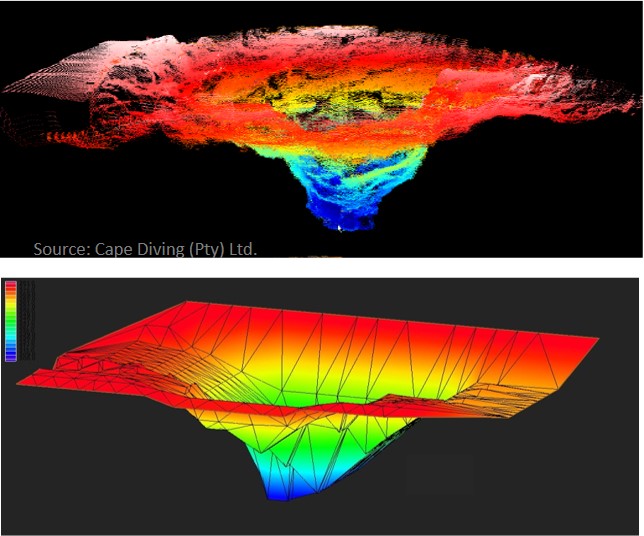
Background
The Comprehensive Fracture Mechanics Method (CFM) has been developed by Bollaert (2002). It makes use of the dynamic water pressures that are generated inside rock joints. Based on principles directly derived from the field of Linear Elastic Fracture Mechanics (LEFM), the method transforms these water pressures into a stress field induced in the rock mass, at the tip of closed-end rock joints.
Depending on the resistance of the rock mass against fracture propagation, the method determines whether the closed-end rock joint remains stable or propagates along its tip. Propagation of rock joints can occur instantaneously or over a certain time duration. The former case is called instantaneous or brittle crack propagation. The latter is called time-dependent or fatigue crack propagation.
The dynamic water pressures have a cyclic character and travel as transient pressure waves inside rock joints. They can be described by an amplitude and a main frequency. LEFM models can handle such transient loadings by assuming a perfectly linear elastic, homogeneous and isotropic material. These models become quite complicated when accounting for all the relevant parameters. Therefore, a simplified application is used here. It is called the Comprehensive Fracture Mechanics (CFM) method and is applicable to partially jointed rock, i.e. to rock joints that are not fully formed yet and, as such, have a closed-end.
Features
The CFM method is one of the most powerful and efficient methods to predict scour formation and its time evolution in a quasi-3D manner. The following main features are available in X_pl@re:
- user-definable linear elastic fracture mechanics application based on turbulent pressure fluctuations acting inside rock joints
- detailed scour hole shape as a function of time duration of flow, within a 2D vertical plane
- user-definable rock mass resistance against fracturing (UCS strength, initial degree of fracturing, etc.)
- user-definable intensity and frequency of pressure fluctuations inside rock joints
- user-definable fatigue law for each rock mass layer
- pre-defined parametric values as a function of type and initial fracturing of rock mass


Aeras of application
The CFM method is applicable to the following types of turbulent flow impacting the water-rock interface:
- vertically impinging jets
- obliquely impiniging jets
- circular and rectangular shaped jets
- nappe flows
- any other turbulent flows quasi-parallel to the interface
The method is particuarly relevant in case the rock mass is initially partially fractured, i.e. the rock joint network is not complete.
